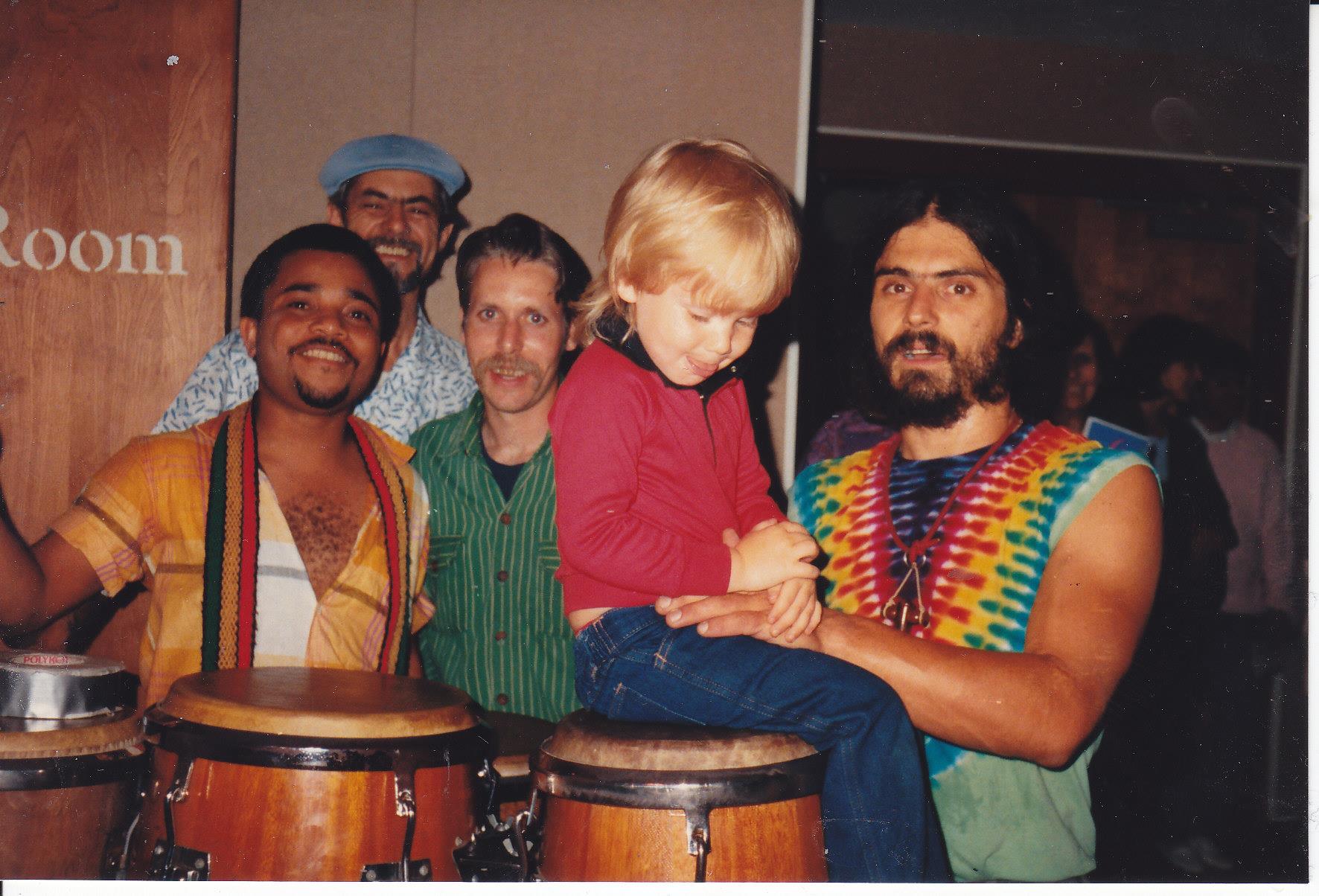Blog
“Zapateado” is a flamenco style which belongs to the polyrhythmic group. This is one of the most paradigmatic dances in flamenco art.
Its main feature is the use of tap-dance as percussion. It seems that the origin of “zapateado” is located in the Atlantic cultural exchange, since in many countries in America, there exist some kind of tap dancing, similar to the “zapateo”: in Mexico, Colombia, Venezuela and Cuba.
“Zapateado” of Cadiz was one of the first to emerge. Flamenco dancer Josefa Vargas might be one of the pioneers of “zapateado”, according to the references of the media in October 1850. The “zapateado” adopted polyrhythm of “tanguillos”, possibly due to the richness of this style.
Nowadays “zapateado” is not a very usual dance. But, the guitar has always been an instrument faithful to this flamenco style, which is found in the guitarist’s repertoire.
more...A prominent member of the local group of galaxies, M33 is also known as the Triangulum Galaxy and lies a mere 3 million light-years away. Sprawling along loose spiral arms that wind toward the core, M33’s giant HII regions are some of the largest known stellar nurseries, sites of the formation of short-lived but very massive stars. Intense ultraviolet radiation from the luminous massive stars ionizes the surrounding hydrogen gas and ultimately produces the characteristic red glow. To highlight the HII regions in this telescopic image, broadband data used to produce a color view of the galaxy were combined with narrowband data recorded through a hydrogen-alpha filter, transmitting the light of the strongest hydrogen emission line. Close-ups of cataloged HII regions appear in the sidebar insets. Use the individual reference number to find their location within the Triangulum Galaxy. For example, giant HII region NGC604 is identified in an inset on the right and appears at position number 15. That’s about 4 o’clock from galaxy center in this portrait of M33.

Franklin Joseph Lymon (September 30, 1942 – February 27, 1968 Harlem, NY) was an American rock and roll/rhythm and blues singer and songwriter, best known as the boy soprano lead singer of the New York City-based early rock and roll group The Teenagers. The group was composed of five boys, all in their early to mid-teens. The original lineup of the Teenagers, an integrated group, included three African-American members, Frankie Lymon, Jimmy Merchant, and Sherman Garnes; and two Puerto Rican members, Joe Negroni and Herman Santiago. The Teenagers’ first single, 1956’s “Why Do Fools Fall in Love“, was also their biggest hit. After Lymon went solo in mid-1957, both his career and that of the Teenagers fell into decline. He was found dead at the age of 25 on the floor of his grandmother’s bathroom from a heroin overdose. His life was dramatized in the 1998 film Why Do Fools Fall In Love. On February 27, 1968, Lymon was found dead of a heroin overdose at the age of 25 on the floor of his grandmother’s bathroom with a syringe by his side. Lymon, a Baptist, was buried at Catholic Saint Raymond’s Cemetery in the Throggs Neck section of The Bronx, New York City, New York. “I’m Sorry” and “Seabreeze”, the two songs Lymon had recorded for Big Apple before his death, were released later in 1968.
https://www.youtube.com/watch?v=VfN9WTWeUvw&list=RDVfN9WTWeUvw&index=1
more...
Hossein Dehlavi (Persian: حسین دهلوی) (September 30, 1927 – October 15, 2019) was an Iranian composer.
Hossein Dehlavi was born in 1927 in Tehran, Iran and started music with his father Moezeddin Emami who was a pupil of master Ali-Akbar Shahnazi. Dehlavi studied composition at the Tehran Conservatory of Music with Hossein Nassehi and Heimo Tauber. He studied Persian music with Abolhasan Saba and, from 1957 to 1967, was the principal conductor of the Persian Fine Arts Administration Orchestra, also known as Saba Orchestra.[1][3]
Dehlavi started to teach at the Persian National Music Conservatory in Tehran since 1957 and from 1961 until 1950 was the director of this conservatory. The conductor Ali Rahbari was one of his pupils. In 1992, with the cooperation of nearly 70 players of Persian instruments, Dehlavi established the Plectrum Orchestra in Tehran.
His works included several pieces for Persian instruments and orchestra, voice and orchestra, choir and orchestra, and two operas and a ballet. As his contribution to the Year of the Child (1979), he wrote an opera for children called Mana and Mani.
His wife Susan Aslani and his son Houman Dehlavi are also famous musicians.
more...Oscar Pettiford (September 30, 1922 – September 8, 1960) was an American jazz double bassist, cellist and composer. He was one of the earliest musicians to work in the bebop idiom.
Pettiford was born at Okmulgee, Oklahoma. His mother was Choctaw, and his father was half Cherokee and half African American.
He grew up playing in the family band in which he sang and danced before switching to piano at the age of 12, then to double bass when he was 14. He is quoted as saying he did not like the way people were playing the bass so he developed his own way of playing it. Despite being admired by the likes of Milt Hinton at the age of 14, he gave up in 1941 as he did not believe he could make a living. Five months later, he once again met Hinton, who persuaded him to return to music.
more...Bernard “Buddy” Rich (September 30, 1917 – April 2, 1987) was an American jazz drummer and bandleader. He is considered one of the most influential drummers of all time.
Rich was born and raised in Brooklyn, New York. He discovered his affinity for jazz music at a young age and began drumming at the age of 2. He began playing jazz in 1937, working with acts such as Tommy Dorsey, Count Basie, and Harry James. From 1942 to 1944, Rich served in the U.S. Marines. From 1945 to 1948, he led the Buddy Rich Orchestra. In 1966, he recorded a big-band style arrangement of songs from West Side Story. He found lasting success in 1966 with the formation of the Buddy Rich Big Band, also billed as the Buddy Rich Band and The Big Band Machine.
Rich was known for his virtuoso technique, power, and speed. He was an advocate of the traditional grip, though he occasionally used match gripwhen playing the toms. Despite his commercial success and musical talent, Rich never learned how to read sheet music, preferring to listen to drum parts and play them from memory.
more...Westerhout 5 (Sharpless 2-199, LBN 667, Soul Nebula) is an emission nebula located in Cassiopeia. Several small open clusters are embedded in the nebula: CR 34, 632, and 634 (in the head) and IC 1848 (in the body). The object is more commonly called by the cluster designation IC 1848.
Small emission nebula IC 1871 is present just left of the top of the head, and small emission nebulae 670 and 669 are just below the lower back area.
The galaxies Maffei 1 and Maffei 2 are both nearby the nebula, although light extinction from the Milky Way makes them very hard to see. Once thought to be part of the Local Group, they are now known to belong to their own group- the IC 342/Maffei Group.
This complex is the eastern neighbor of IC1805 (Heart Nebula) and the two are often mentioned together as the “Heart and Soul”.

Roy Sinclair Campbell Jr. (September 29, 1952 – January 9, 2014) was an American trumpeter frequently linked to free jazz, although he also performed rhythm and blues and funk during his career.
Born in Los Angeles, California, in 1952, Campbell was raised in New York City. At the age of fifteen, he began learning to play trumpet and soon studied at the Jazz Mobile program along with Kenny Dorham, Lee Morgan and Joe Newman. Throughout the 1960s, still unacquainted with the avant-garde movement, Campbell performed in the big bands of the Manhattan Community College. From the 1970s onwards, he performed primarily within the context of free jazz, spending some of this period studying with Yusef Lateef.
more...Jean-Luc Ponty (born 29 September 1942) is a French jazz violinist and composer.
Ponty was born into a family of classical musicians in Avranches, France. His father taught violin, his mother taught piano. At sixteen, he was admitted to the Conservatoire National Supérieur de Musique de Paris, graduating two years later with the institution’s highest honor, Premier Prix (first prize). He was hired by the Concerts Lamoureux in which he played for three years.
While still a member of the orchestra in Paris, Ponty picked up a side job playing clarinet (which his father had taught him) for a college jazz band, that regularly performed at local parties. It proved life-changing. A growing interest in Miles Davis and John Coltrane compelled him to take up tenor saxophone. One night after an orchestra concert, and still wearing his tuxedo, Ponty found himself at a local club with only his violin. Within four years, he was widely accepted as the leading figure in “jazz fiddle”.
At that time, Ponty was leading a dual musical life: rehearsing and performing with the orchestra while also playing jazz at clubs throughout Paris. The demands of this schedule eventually brought him to a crossroads. Critic Joachim Berendt wrote that “Since Ponty, the jazz violin has been a different instrument”.
https://www.youtube.com/watch?v=IHawR70IplI
more...Jerry Lee Lewis (born September 29, 1935) is an American singer, songwriter, and pianist. Nicknamed the Killer, he has been described as “rock n’ roll‘s first great wild man and one of the most influential pianists of the 20th century.” A pioneer of rock and roll and rockabilly music, Lewis made his first recordings in 1956 at Sun Records in Memphis. “Crazy Arms” sold 300,000 copies in the South, but it was his 1957 hit “Whole Lotta Shakin’ Goin’ On” that shot Lewis to fame worldwide. He followed this with the major hits “Great Balls of Fire“, “Breathless“, and “High School Confidential“. However, his rock and roll career faltered in the wake of his marriage to Myra Gale Brown, his 13-year-old cousin.
His popularity quickly eroded following the scandal and with few exceptions such as a cover of Ray Charles‘s “What’d I Say“, he did not have much chart success in the early 1960s. His live performances at this time were increasingly wild and energetic. His 1964 live album Live at the Star Club, Hamburg is regarded by music journalists and fans as one of the wildest and greatest live rock albums ever. In 1968, Lewis made a transition into country music and had hits with songs such as “Another Place, Another Time“. This reignited his career, and throughout the late 1960s and 1970s he regularly topped the country-western charts; throughout his seven-decade career, Lewis has had 30 songs reach the Top 10 on the Billboard Country and Western Chart. His No. 1 country hits included “To Make Love Sweeter for You“, “There Must Be More to Love Than This“, “Would You Take Another Chance on Me” and “Me and Bobby McGee“.
more...Born near the George Floyd Memorial on Chicago Ave Mario has become a Floridan. In this pic with Dad and Jamaican Dance Company at Ordway Theater approx 1988. With George Parker, Gary Dusel and Derrick.


Kenneth David Kirkland (September 28, 1955 – November 12, 1998) was an American pianist/keyboardist.
Born in Brooklyn, New York, United States, Kirkland was six when he first sat down at a piano keyboard. After years of Catholic schooling, Kirkland enrolled at the Manhattan School of Music, where he studied classical piano performance, classical theory and composition. Kirkland’s first professional work came with Polish fusion violinist Michal Urbaniak, touring throughout Europe with his group in 1977. Coincidentally, his next high-profile gig was with another Eastern European jazz émigré, Miroslav Vitous. Kirkland is featured on Vitous’ ECM recordings First Meeting and Miroslav Vitous Group. In 1980, while Kirkland was on tour in Japan with Terumasa Hino, he met Wynton Marsalis, which began their long association.[1] On Marsalis’s self-titled debut album, Kirkland shared the piano duties with one of his musical influences, Herbie Hancock,[5] but was the sole pianist on Marsalis’s subsequent releases Think of One, Hothouse Flowers and Black Codes. After his association with Wynton Marsalis, Kirkland joined Branford Marsalis’s band. He is also on Marsalis’s funk band album Buckshot Lefonque. When Branford Marsalis assumed the high-visibility role of bandleader for NBC TV’s The Tonight Show with Jay Leno, Kirkland became the band’s pianist.
On November 7, 1998, Kirkland attended Marsalis’s wedding in New Rochelle, New York. Kirkland was found dead in his Queens apartment on Friday, November 13, 1998.
The official doctor’s report listed his death as due to congestive heart failure
https://www.youtube.com/watch?v=-LyS_1NbUGg
more...John Gilmore (September 28, 1931 – August 20, 1995) was an American jazz saxophonist, clarinetist, and percussionist. He was known for his tenure with the avant-garde keyboardist/bandleader Sun Ra from the 1950s to the 1990s.
Gilmore was raised in Chicago and played clarinet from the age of 14. He took up the tenor saxophone while serving in the United States Air Forcefrom 1948 through 1951. He then pursued a musical career, beginning as a tenor saxophonist on a national tour with the Harlem Globetrotters in an ensemble that included pianist Earl Hines in 1952.
In 1953 Gilmore met pianist and bandleader Sun Ra who had a profound impact on him as a musician. For the next four decades, he recorded and performed almost exclusively with Sun Ra; first as a trio, and then in the band Arkestra. This was puzzling to some, who noted Gilmore’s talent, and thought he could be a major star like John Coltrane or Sonny Rollins. Despite being five years older than Gilmore, Coltrane was impressed with his playing, and took informal lessons from Gilmore in the late 1950s. Coltrane’s epochal, proto–free jazz “Chasin’ the Trane” was inspired partly by Gilmore’s sound. The Penguin Guide to Jazz suggests Gilmore remained an influence in Coltrane’s later period, particularly on Sun Ship.
more...Lata Mangeshkar ([ləˈtaː məŋˈɡeːʃkər] (![]() listen)) (born Hema Mangeshkar; 28 September 1929) is an Indian playback singer and music director. She is one of the best known and most respected playback singers in India.[3][4] She has recorded songs in over a thousand Hindi films and has sung songs in over thirty-six Indian languages and foreign languages, though primarily in Marathi, Urdu, Hindi and Bengali.
listen)) (born Hema Mangeshkar; 28 September 1929) is an Indian playback singer and music director. She is one of the best known and most respected playback singers in India.[3][4] She has recorded songs in over a thousand Hindi films and has sung songs in over thirty-six Indian languages and foreign languages, though primarily in Marathi, Urdu, Hindi and Bengali.
The Dadasaheb Phalke Award was bestowed on her in 1989 by the Government of India. In 2001, in recognition of her contributions to the nation, she was awarded the Bharat Ratna, India’s highest civilian honour and is only the second vocalist, after M. S. Subbulakshmi, to receive this honour.[5]France conferred on her its highest civilian award, the Officer of the Legion of Honour, in 2007.[6]
She is the recipient of three National Film Awards, 15 Bengal Film Journalists’ Association Awards, four Filmfare Best Female Playback Awards, two Filmfare Special Awards, Filmfare Lifetime Achievement Award and many more. In 1974, she became the first Indian to perform at the Royal Albert Hall, London.
more...More Posts
- Jeff Beck
- Frank Lowe
- Terry Riley
- World Music Tinariwen
- Daily Roots Black Uhuru
- Cosmos Sh2-240
- Robert Hunter
- Milt Hinton
- Sahib Shihab
- George Russell
- World Music INSOUL Ensemble with Abdelkader Ghayt
- Daily Roots King Tubby
- Political Haters
- Cosmos LDN 1251
- Kris Kristofferson
- Junior Marvin
- Hermeto Pascoal
- Ray Mantilla
- Katherine Dunham
- World Music Sai Zahoor